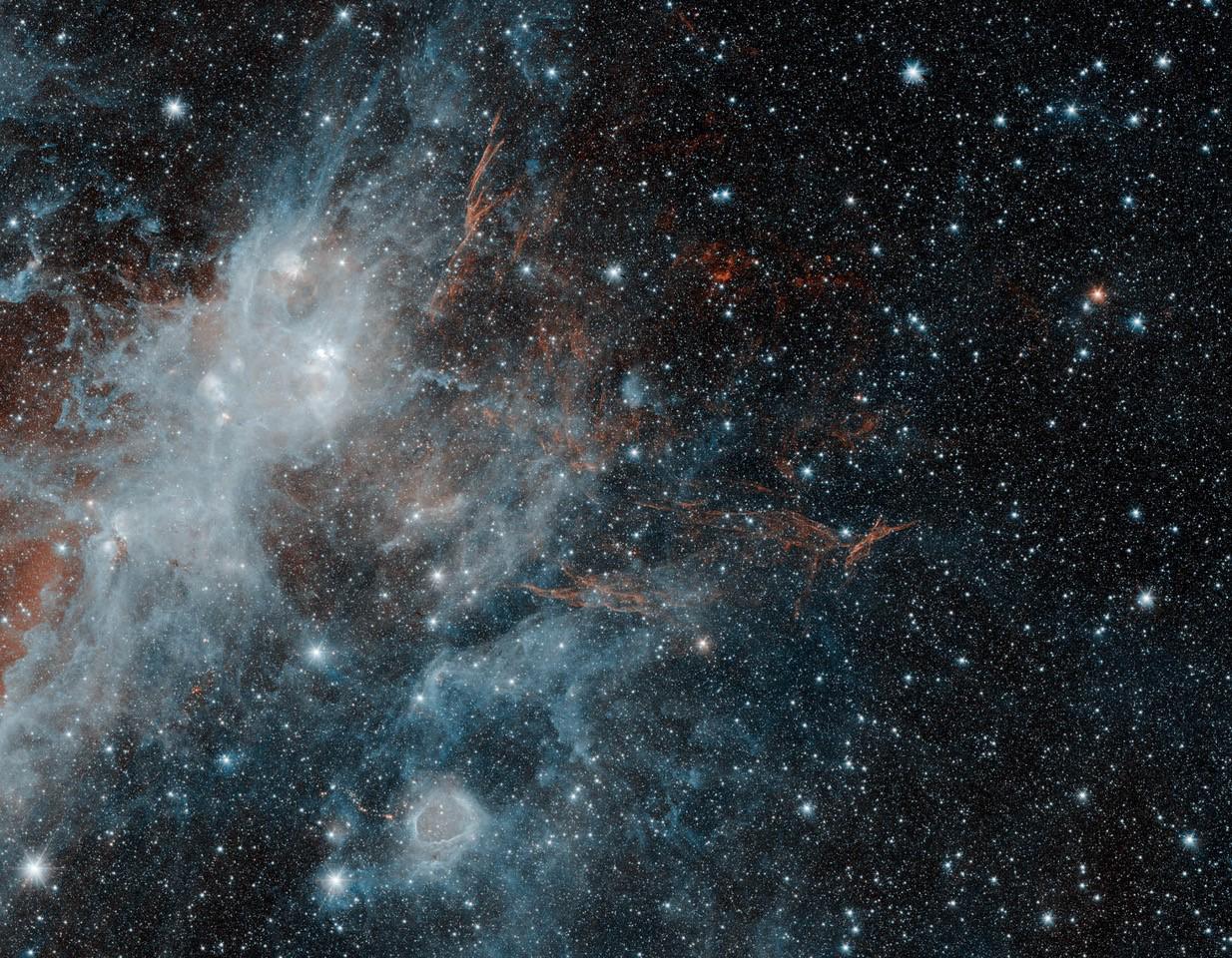Ghostly Remains of a Dead Star Revealed in Infrared Light (Photo)

Red streaks of energized gas left over from an ancient stellar explosion branch across the cosmos in this spectacular new photo from NASA's Spitzer Space Telescope.
This supernova remnant, known as HBH 3, is one of the largest in the Milky Way galaxy and measures about 150 light-years across. It is also one of the oldest; the star that exploded to create this cosmic spectacle did so 80,000 to 1 million years ago, NASA officials said in a statement.
HBH 3 was first detected in 1966 by scientists using radio telescopes, which allow astronomers to peer through interstellar dust and "see" low-frequency radiation that isn't visible to the human eye. The Spitzer Space Telescope observes the universe in infrared light, which has higher energy than radio waves but is still just outside the visible spectrum. [Gallery: The Infrared Universe Seen by Spitzer Telescope]
Parts of the supernova remnant HBH 3 do glow with visible light. "The branches of glowing material are most likely molecular gas that was pummeled by a shockwave generated by the supernova," NASA officials said. "The energy from the explosion energized the molecules and caused them to radiate infrared light."
Along with the supernova remnant, the image shows parts of some hazy, white clouds known as W3, W4 and W5. These regions form a large molecular cloud complex in the constellation Cassiopeia.
To create this image of HBH 3 and its surrounding clouds, researchers mapped the data from the Spitzer Space Telescope by assigning colors to two types of infrared light emitted by the region. Infrared light with a wavelength of 3.6 microns is shown in blue, while lower-energy infrared light with a wavelength of 4.5 microns is shown in red.
The clouds of W3, W4 and W5 appear white because they emit both of these wavelengths of light, but the supernova remnant appears red because it emits only the 4.5-micron infrared light.
Breaking space news, the latest updates on rocket launches, skywatching events and more!
NASA's Fermi Gamma-Ray Telescope has also detected high-energy gamma-rays coming from the cloudy region around HBH 3. "This emission may be coming from gas in one of the neighboring star-forming regions, excited by powerful particles emitted by the supernova blast," NASA officials said.
This image from the Spitzer Space Telescope was captured in May 2010 and was released on Aug. 2, 2018.
Email Hanneke Weitering at hweitering@space.com or follow her @hannekescience. Follow us @Spacedotcom, Facebook and Google+. Original article on Space.com.

Hanneke Weitering is a multimedia journalist in the Pacific Northwest reporting on the future of aviation at FutureFlight.aero and Aviation International News and was previously the Editor for Spaceflight and Astronomy news here at Space.com. As an editor with over 10 years of experience in science journalism she has previously written for Scholastic Classroom Magazines, MedPage Today and The Joint Institute for Computational Sciences at Oak Ridge National Laboratory. After studying physics at the University of Tennessee in her hometown of Knoxville, she earned her graduate degree in Science, Health and Environmental Reporting (SHERP) from New York University. Hanneke joined the Space.com team in 2016 as a staff writer and producer, covering topics including spaceflight and astronomy. She currently lives in Seattle, home of the Space Needle, with her cat and two snakes. In her spare time, Hanneke enjoys exploring the Rocky Mountains, basking in nature and looking for dark skies to gaze at the cosmos.
